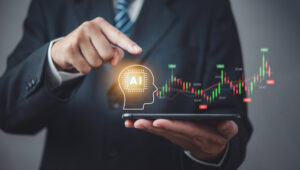In today’s fast-paced world, the ability to AI design ads automatically is transforming the landscape of digital marketing. Businesses are increasingly leveraging artificial intelligence to enhance their advertising strategies, creating more engaging and personalized content for their audiences. This article delves into the role and impact of AI in the advertising industry, shedding light on how it is reshaping the way ads are created and delivered.

Understanding AI in Advertising
The integration of AI in advertising involves using machine learning algorithms and data analytics to craft advertisements that resonate with target audiences. By analyzing vast amounts of data, AI can identify patterns and trends that humans might overlook, enabling marketers to create more effective ads.
Benefits of AI-Driven Ad Design
1. Efficiency and Speed
Using AI to design ads automatically significantly increases the efficiency and speed of ad creation. AI tools can generate multiple ad variations quickly, allowing marketers to test and optimize campaigns in real-time.
2. Cost Reduction
Automating the ad design process reduces the need for extensive human resources, thereby cutting costs. Companies can allocate their budgets more strategically, investing in areas that directly impact their bottom line.
3. Personalization and Customer Engagement
AI enables marketers to create personalized ads that cater to individual preferences, boosting customer engagement. Through advanced targeting capabilities, AI ensures that ads reach the right audience at the right time.
How AI Works in Ad Design
Data Collection and Analysis
AI systems gather data from various sources, including consumer behavior, demographics, and market trends. This data is then analyzed to generate insights that inform ad design.
Creative Generation
AI tools use these insights to create ad content that aligns with the brand’s objectives and audience preferences. From copywriting to visual design, AI can handle multiple aspects of ad creation.
Challenges and Considerations
1. Data Privacy
As AI relies heavily on data, ensuring data privacy and security remains a critical challenge. Companies must adhere to regulations and implement robust data protection measures.
2. Maintaining Creativity
While AI excels in data-driven tasks, maintaining the creative essence of advertising requires human input. Striking a balance between automation and creativity is essential.
The Future of AI in Advertising
As technology continues to evolve, the role of AI in advertising will expand further. With advancements in machine learning and neural networks, AI will become an even more integral part of the advertising ecosystem, driving innovation and efficiency.
Real-World Applications
Many companies are already benefiting from AI-driven advertising solutions. For instance, AI tools such as AI Ad Animation Generator and AI Product Description Generator enable businesses to create dynamic and compelling ads effortlessly.
Conclusion
The ability to AI design ads automatically represents a significant advancement in digital marketing. By harnessing the power of AI, businesses can create more effective, engaging, and personalized ads, ultimately improving their marketing outcomes. As AI technology continues to advance, its impact on advertising will only grow, offering new opportunities for marketers and advertisers worldwide.

FAQs
1. How does AI enhance ad targeting?
AI enhances ad targeting by analyzing consumer data and identifying patterns that help deliver ads to the most relevant audience segments.
2. Can AI completely replace human creativity in ad design?
While AI can automate many aspects of ad design, human creativity is essential for crafting unique and emotionally resonant advertisements.
3. What are the ethical considerations in using AI for advertising?
Ethical considerations include ensuring data privacy, avoiding bias in AI algorithms, and maintaining transparency in ad targeting practices.







